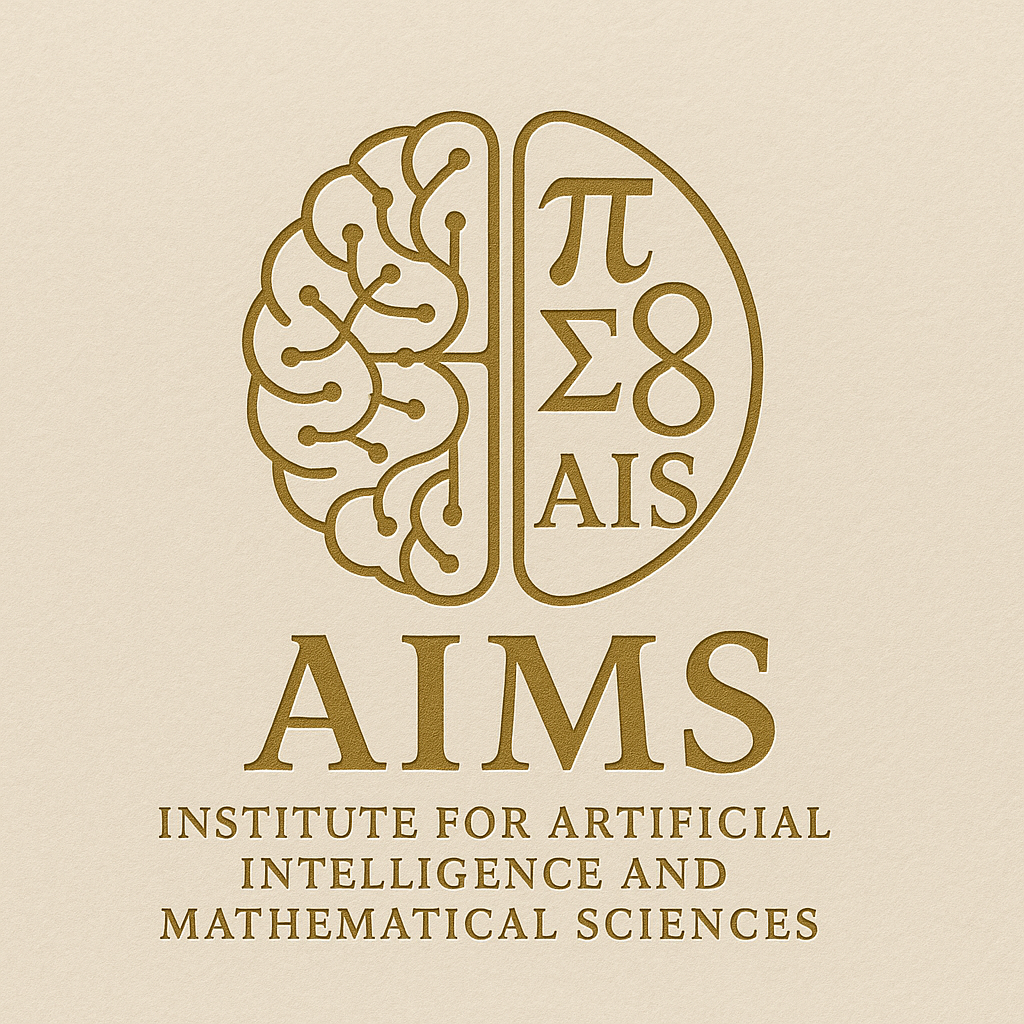

July 29
8:00: Welcome remarks
9:00: Goren, Supersingular elliptic curves, quaternion algebras and applications to cryptography
10:00: Donagi, Isogenies for curves of higher genus
11:00: Varshavsky, Lefschetz trace formula and local terms for transversal intersections
Lunch
14:00: Besser, Point counting on curves and other varieties over finite fields.
15:00: Neftin, Injectivity on rational points of rational maps that factor through Lattes maps
July 30
9:00: Kopeliovich, Generalization of the $\lambda$ function for Mumford superelliptic curves
10:00: Chitayat, Rationality of weighted hypersurfaces of a special degree
11:00: Kadets, Groups of points on abelian varieties
Lunch14:00: Shnidman: Vanishing criteria for Ceresa cycles
15:00: Shaska, Computational aspects of genus two curves
16:00: Obus, Superelliptic curves with complex multiplication
July 31
9:00: Kotsireas, Remarks on Hadamard Conjecture
10:00: Bernatska, Jacobi inversion problem on non-hyperelliptic curves
11:00: Zemel : On Differentiating Symmetric Functions
Lunch14:00: Schein, Structure of principal series and the mod p local Langlands correspondence
15:00: Malmendier, Isogenies on certain K3 surfaces.
16:00: Closing remarks
Abstracts
Eyal Goren, Department of Mathematics, McGill University
Supersingular elliptic curves, quaternion algebras and some applications to cryptography
Abstract: Part of the talk is expository: I will explain how supersingular isogeny graphs can be used to construct cryptographic hash functions and survey some of the rich mathematics involved. Then, with this motivation in mind, I will discuss two recent theorems by Jonathan Love and myself. The first concerns the generation by maximal orders by elements of particular norm. The second states that maximal orders of elliptic curves are determined by their theta functions.
Ron Donagi, Department of Mathematics, Department of Mathematics, University of Pennsylvania
Isogenies for curves of higher genus
Abstract: Computation of Gauss's arithmetic-geometric mean involves iteration of a simple step, whose algebro-geometric interpretation is the construction of an elliptic curve isogenous to a given one, specifically one whose period is double the original period. A higher genus analogue should involve the explicit construction of a curve whose jacobian is isogenous to the jacobian of a given curve. The doubling of the period matrix means that the kernel of the isogeny should be a lagrangian subgroup of the group of points of order 2 in the jacobian. In genus 2 such a construction was given classically by Humbert and was studied more recently by Bost and Mestre. In this article we give such a construction for general curves of genus 3. We also give a similar but simpler construction for hyperelliptic curves of genus 3. We show that the hyperelliptic construction is a degeneration of the general one, and we prove that the kernel of the induced isogeny on jacobians is a lagrangian subgroup of the points of order 2. We show that for g at least 4 no similar construction exists, and we also reinterpret the genus 2 case in our setup. Our construction of these correspondences uses the bigonal and the trigonal constructions, familiar in the theory of Prym varieties.
Yacov Varshavsky, The Hebrew University
Lefschetz trace formula and local terms for transversal intersections
Abstract: Let $f$ be a morphism of projective algebraic varieties. Then $f$ induces an endomorphism $H^i(f)$ of each l-adic cohomology group $H^i(X,Q_l)$ of $X$, and a very general Lefschetz-Verider trace formula (LFT) asserts that the virtual trace $\sum_i (-1)^i Tr(H^i(f))$ can be written in the form $\sum_y LT_y$, where $y$ runs over the set of connected components of the subvariety of fixed points $Fix(f)$ of $f$.
Unfortunately, the definition of the ``true local terms'' LT_y is very inexplicit, therefore the general form of the LFT is not very useful. The goal of the talk is to discuss a recent result asserting that LT_y=1, if the graph of $f$ ``intersects the diagonal transversally''. In particular, we give an affirmative answer to a question of Deligne. More generally, we give a sufficient condition when the ``true local terms" are equal to the ``naive local terms".
Amnon Besser, Ben Gurion University
Point counting on curves and other varieties over finite fields.
Abstract: A basic algorithmic problem with important applications to cryptography is to efficiently count the number of points on varieties over finite fields. I will survey techniques for achieving this, primarily for curves, culminating in the work of Tuitman. I will then sketch an approach to point counting using cup products, that is being developed in joint work with de Jeu, Guan, Li and Roblot.Danny Neftin, Israel
Injectivity on rational points of rational maps that factor through Lattes maps
Abstract: It is conjectured that every rational function f:Q->Q is at most 16:1 on all but finitely many points. The number 16 is attained for Lattes maps f. We show that if some factor of f is a Lattes map and the map is 2:1 over infinitely many points then f has to be a Lattes map. This is based on a joint work with Nimrod Segol.Yaacov Kopeliovich, University of Connecticut
Generalization of the $\lambda$ function for Mumford Super-elliptic curves
Abstract: The theory of theta functions and analytical Jacobians is well developed over the complex fields. Mumford constructed curves over a $p$-adic fields that possess a theory of analytical Jacobians and theta functions above these fields. We use these $p$-adic theta functions to express the cross ratios of branch points of super-elliptic Mumford curves i.e. $y^p=\prod_{i=1}^r(x-\lambda_i)^{r_i}$ as ratios of theta functions. This generalizes the work of S.Zemel and H.Farkas in the usual complex case. We expect these formulas to be useful in computing the $p$-adic periods of such curves (analogous to J. Teitelbaum's work on the exceptional zero conjecture) and be helpful to explore whether $p$-adic Mumford curves of low genus can be used to develop public cryptography protocols.Michael Chitayat, University of Ottawa
Rationality of weighted hypersurfaces of a special degree
Abstract: Let X ⊂ P(w0, w1, w2, w3) be a quasismooth well-formed weighted projective hypersurface and let L = lcm(w0, w1, w2, w3). We characterize when X is rational under the assumption that L divides deg(X). Furthermore, we give a new family of normal rational weighted projective hypersurfaces with ample canonical divisor, valid in all dimensions, adding to the list of examples discovered by Kollar. Finally, we determine precisely which affine Pham-Brieskorn threefolds are rational, answering a question of Rajendra V. Gurjar.
Borys Kadets, Department of Mathematics, The Hebrew University
Groups of points on abelian varieties
Abstract: I will describe some recent results on the group structure and point counts on abelian and Jacobian varieties over a small finite field. Despite the classical nature of the subject, there has been a lot of progress in the area in the past few years, which I will attempt to survey. The newest results of the talk are based on work in progress joint with Daniel Keliher.Ari Shindman, Hebrew University
Vanishing criteria for Ceresa cycles
Abstract: The Ceresa cycle is a canonical homologically trivial algebraic cycle in the Jacobian of a curve which governs the motive of the curve/Jacobian in certain ways. It is known to vanish for hyperelliptic curves, and recent examples of non-hyperelliptic torsion Ceresa cycles have been found. I'll discuss a general torsion criteria for curves with automorphisms and discuss the case of Picard curves y^3 = x^4 + ax^2 + bx + c in detail. I'll also briefly discuss a certain "shadow" of the Ceresa cycle over finite fields, which seems like an interesting object to study from the cryptographic point of view. Joint work with Jef Laga.Elira Shaska, Computer Science and Engineering, Oakland University
Computational aspects of genus two curves
Abstract: We study the locus 𝓛ₙ of genus two curves with (n,n)-split Jacobian and focus on explicit computational results for the locus 𝓛ₙ, for n = 2, 3, 5. Such curves are important in isogeny based cryptography. We explore idea from machine learning to design algorithms which determine if a curve has (n,n)-split Jacobians, and show that there are no rational moduli points p∈ 𝓛ₙ with weighted moduli height ≤ 2 in any of 𝓛₂, 𝓛₃, and 𝓛₅. Further we study the distribution of fine points in the moduli space of genus two curves. This is joint work with T. Shaska.Andrew Obus, Baruch College
Superelliptic curves with many automorphisms and CM Jacobians
Abstract: Let C be a smooth, projective, genus g ≥ 2 curve, defined over C. Then C has many automorphisms if its corresponding moduli point p ∈ Mg has a neighborhood U in the complex topology, such that all curves corresponding to points in U \ {p} have strictly fewer automorphisms than C. We compute completely the list of superelliptic curves C for which the superelliptic automorphism is normal in the automorphism group Aut(C) and C has many automorphisms. For each of these curves, we determine whether its Jacobian has complex multiplication. As a consequence, we prove the converse of Streit’s complex multiplication criterion for these curves.
Ilias Kotsireas, Athena Research Center, Athens, Greece
Remarks on Hadamard Conjecture
Abstract: In 1893, Jacques Salomon Hadamard showed that if H is a square matrix of order n, with real entries of absolute value less than or equal to 1, then it satisfies a determinant bound. Matrices that satisfy the equality in this determinant bound became known as Hadamard matrices. Beyond the trivial Hadamard matrices of orders 1 and 2, there is a necessary existence condition on the order n, namely that n is a multiple of 4. The sufficiency of this existence condition is the celebrated Hadamard conjecture, namely that there exists a Hadamard matrix of order n, for every n which is a multiple of four. Despite the fact that a plethora of constructions for Hadamard matrices are available, their collective distilled power does not suffice to provide a resolution of the Hadamard conjecture. We shall survey a number of important results on the Hadamard conjecture since its inception. We shall also describe alternative formulations of the Hadamard conjecture, with an eye on discovering new as-of-yet unexplored connections with other areas of Mathematics. Finally, we shall mention two promising structured forms of the Hadamard conjecture.Julia Bernatska, University of Connecticut
Solution of the Jacobi inversion problem on non-hyperelliptic curves, basis uniformization functions and Kummer surfaces
Abstract: The solution is given for the class of (n,s)-curves, which are unfoldings of the Pham singularities y^n-x^s=0, where n and s are coprime, and expressed in terms of Weierstrass p-functions related to a curve. Solutions are written for generic curves, and the case of a superelliptic curve looks exactly the same as a generic one, though some parameters of the curve vanish, which simplify relations between p-functions, like fundamental cubic relations and equations for Kummer surfaces.Shaul Zemel, Department of Mathematics, Hebrew University
On Differentiating Symmetric Functions
Abstract: The Jacobian of a curve is an Abelian variety which is birational, through the Abel--Jacobi map, with the symmetric power of the curve. When considering theta derivatives, this map from a symmetric power has to be differentiated. This raises the question about the appropriate way to differentiate any type of symmetric function. The investigation leads to a neat embedding of Weyl algebras using differential operators that can be constructed using divided difference operators, and to objects related to several other questions in mathematics.Michael Schein, Bar Ilan University
Structure of principal series and the mod p local Langlands correspondence
Abstract: Let $F/\Q_p$ be a finite extension, and let $\rho$ be a two-dimensional irreducible mod $p$ representation of the absolute Galois group $G_F$ of $F$. The mod $p$ local Langlands correspondence expects to associate to it a supercuspidal representation $\pi (p)$ of $GL_2 (F)$. The correspondence is not known in any case with $F\neq Q_p$ . However, if $F$ is unramified and $p$ is generic, Breuil and Paskunas have constructed an infinite family of supercuspidal representations; subsequent work on local-global compatibility has provided substantial evidence that their family should contain the correct $\pi (p)$ . We will provide an overview of the subject and discuss some new constructions and results for non-generic Galois representations $\rho$. A key ingredient is joint work with Re'em Waxman on the structure of mod $p$ principal series representations for the finite groups $GL_2({\mathcal O}_F/{\mathfrak M}^n$ , where $\mathfrak m$ is the maximal ideal.Andreas Malmendier, Utah State University
Isogenies of certain K3 surfaces and their modularity
Abstract: We construct geometric isogenies between three types of two-parameter families of K3 surfaces with Picard rank 18. One is the family of Kummer surfaces associated with Jacobians of genus-two curves admitting an elliptic involution, another is the family of Kummer surfaces associated with the product of two non-isogenous elliptic curves, and the third is the twisted Legendre pencil. The isogenies imply the existence of algebraic correspondences between these K3 surfaces and prove that the associated four-dimensional Galois representations are isomorphic. In ongoing work with Clingher, Kim, and You, we proved that, after suitable specializations of the parameters, these K3 surfaces have complex multiplication (CM) and become modular, i.e., the Galois representations of dimensions less than or equal to 6 associated with the transcendental lattices are all induced from one-dimensional representations.
